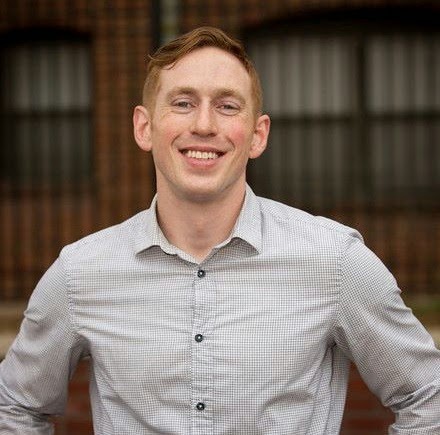Elections are coming up November 4th in DC, and one of the races being contested is the Ward 1 representative of the DC State Board of Education. In order to shine some light on a race that doesn’t get a lot of press, but is very important to local parents, I’m interviewing the four candidates for the board: David Do, Lillian Perdomo, Laura Wilson Phelan, E. Gail Anderson Holness and Scott Simpson.
So far we’ve heard from Laura Wilson Phelan and Lillian Perdomo, and David Do — today is Scott Simpson. E. Gail Anderson Holness didn’t respond, so you won’t be seeing her answers. My questions are in bold, his answers after.

Why are you running?
I’m running because it is way past time for a pragmatic civil rights advocate to have a leadership role in setting our city’s educational agenda. Our schools are making progress for some students, but we continue to leave our low-income students, immigrant students, and student with disabilities behind.
I’m a professional civil rights advocate at the Leadership Conference on Civil and Human Rights. I fight for educational equity issues at the state and national level that D.C. is lagging behind on, including fair funding and resources for low-income students, special education reform, access to science and math programs for girls, and more equal distribution of qualified teachers.
Today, these disparities define our education system, and I can be a fresh voice for pragmatic change.
How would you explain the role of the State Board of Education?
The State Board is the only elected leadership our city has to guide and oversee education in our city. When the office is used appropriately, it can be the conscience for our city’s education system. It has oversight and approval responsibilities over our city’s plan to narrow achievement gaps and our policies to reduce truancy, certify teachers, engage parents, set graduation requirements, and much more. It also houses the Office of the Ombudsman for Public Education and the Chief Student Advocate, which are imperative offices that work directly with schools to ensure they are adequately serving students.
Are there any major changes you’d propose for the Board itself?
We don’t need sweeping reforms to the State Board; we need tactical, pragmatic, and bold leadership to help it find its voice and assert its role as the elected conscience of our city’s education system. The State Board is a very young office that’s only been in existence for a few years. Electing a policy advocate like me can help the State Board grow into its potential as a leader and equal partner in improving our education system.
Tell us your thoughts on the redistricting process, both the most recent and how it should be done in the future.
If it were up to me, we would have channeled all of the rancor over school quality into a useful discussion on how to better educate students instead of how we draw the lines. But the administration’s process for reviewing the boundaries exhibited extraordinarily high levels of community engagement, and the results show for Ward One.
There are a lot of very good things in the boundary review proposal for Ward One. The boundaries for Bancroft and Oyster-Adams now include more of our students. There will be two newly built middle schools, including a dual language middle school, that Ward One students will attend. And we preserve our feeder patterns into prestigious Deal Middle School and Wilson High School.
We should honor the input of parents that led to this plan by accepting the results and moving on to a discussion of improving educational opportunities at every school.
What’s the biggest problem DC schools face?
We continue to exclude our most vulnerable students from the progress in our schools. Our system is still largely defined by its disparities in resources, treatment, and access to opportunities. Students with disabilities, immigrants, low-income students, and students of color all lag behind in achievement, graduation rates, health, and just about every indicator of progress.
But it doesn’t have to be this way. D.C. can be a leader in addressing the disparities that exist here and across the country. We have the political consensus, the resources, and the talent; what we need is the will and leadership to get us there. That’s what I bring to the table.
How did you get interested in running for the board, and do you have children in DC public schools?
The State Board is the place where a civil rights policy advocate can make a real difference in our city. Being a parent is certainly not a prerequisite for caring about equality or our schools and, as we’ve seen time and again from education leaders who do not have kids of their own, I know I’m the best candidate to help us move our city forward. I’m the only candidate who has the energy and dedication, the passion, the relationships, and the skills to push for an inclusive education agenda that works for all students.
Where can people go for more information about your campaign?
People can learn about me and my positions on my website at http://www.simpsonforschools.org. People can also call and email me directly at (202) 735-1984 and scott@simpsonforschools.org.




